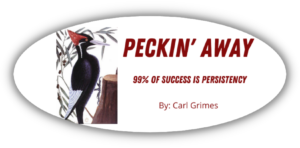If you’re looking to attract an investor or an acquirer one day, expect them to dig into your sales and marketing process.
If you’re a company that sells to other businesses, an investor will want to know where you get your leads from and how much each costs you to generate. They’ll want to know what technology you are utilizing to support your sales team. They’ll want to understand how your sales reps get meetings and how many appointments a good rep has each week. They’ll want to know the close rate of a high performer and how it compares to an average performer.
The investor’s questions aim to gauge the scalability of your sales model under significantly higher investment rather than simply assess your past performance. Acquirers love stumbling over a business where the main constraint to growth is capital. They fall over themselves for a company that has an efficient sales engine that needs more fuel (i.e., money). Most investors have lots of capital but struggle to find businesses with a sales system that won’t collapse under the weight of more money.
How Gregg Romanzo Built a Sales System
In 2004 Gregg Romanzo started an old-school freight brokering business. Most freight brokers are nothing more than a handful of people arranging shipments in return for razor-thin margins, but Romanzo realized his sales model had the potential to grow into something much bigger.
Romanzo’s model involved hiring high-potential people with a relatively modest base salary of between $40,000 and $60,000 per year and teaching them the business from scratch. He armed them with a computer and access to the best scheduling software and tied their variable compensation to the gross margin of the jobs they booked. Romanzo knew if he could get a rep to clear $100,000 per year in total compensation, he would be able to keep them for the long run.
Romanzo took his very best talent—the top one or two percent—and built a team around them so they could earn even more. This cohort of salespeople could clear three, four, or even five hundred thousand dollars in an exceptional year.
Since Romanzo paid a relatively low base salary and his people didn’t need a lot of equipment, he was able to hire a lot of salespeople. By the time he sold his company, he had 200 employees, 190 of which were salespeople. That’s 95% of his headcount dedicated to sales.
How does that compare to your company? If you have a winning formula you think would hold up if you doubled or quadrupled your sales team, consider monetizing the sales model you’ve created. Either hire a lot more reps or show a deep-pocketed investor or acquirer how durable your sales model is and how all you need is their capital to grow it.
Source: valuebuilderservices.com



